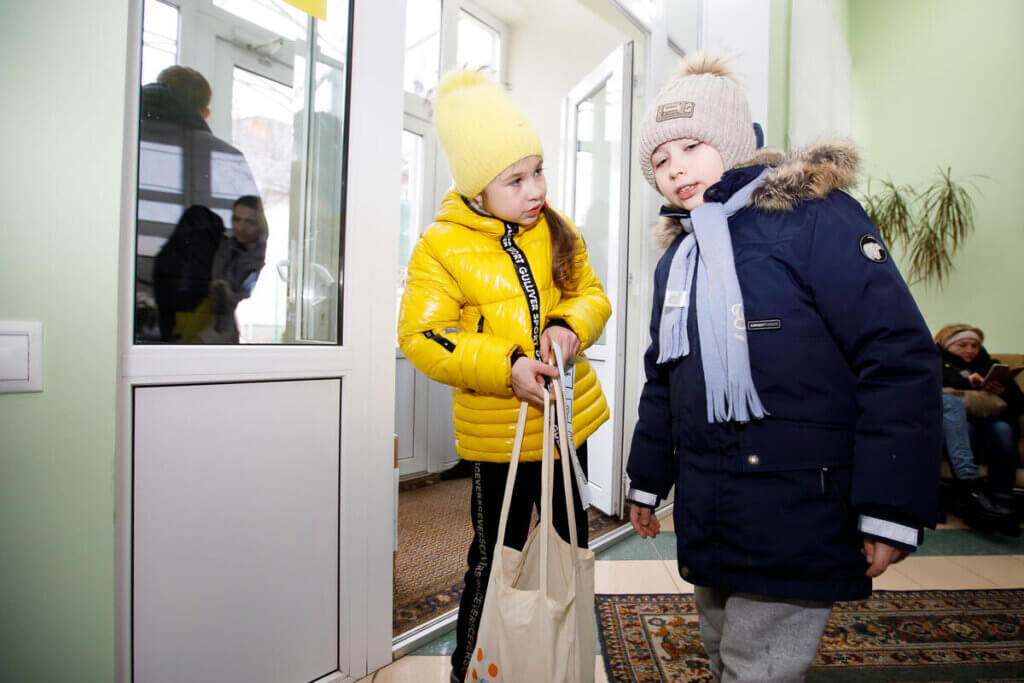Millions of Displaced Women and Girls Prepare for Another Bitter Winter

Fatima was heavily pregnant when a series of violent earthquakes tore through parts of Türkiye and Syria in early February 2023. In an instant, she and her two sons lost everything—including their house.
Thanks to the skilled UNFPA workers who were among the first to arrive on the scene, Fatima was able to safely give birth to a healthy baby boy shortly after the earthquakes—but the danger wasn’t over. Because, with her home destroyed, she had only a thin tent to bring her days-old baby home to.
Winter battered the region. Nights regularly dipped below freezing, and rain, snow, and icy slush blanketed some of the worst-hit areas. Sharp, bitter winds reaching as high as 45 miles per hour shook the walls of the tent, and a series of winter storms rolled in.
For a few long weeks, Fatima and her sons knew nothing but the freezing winds. “Because of the cold, my children were constantly crying,” Fatima told us. “Your services are vital to us.”
Finally, spring broke through, and the sun emerged—a lifeline for Fatima and her children. But their stories are not isolated.
Every year, millions of people displaced by conflict, natural disasters, or other events have no choice but to endure the winter in thin tents shuddering from the wind. In places such as Türkiye, Syria, Gaza, Ukraine, and Afghanistan, the freezing winters are not only uncomfortable, but they can also be deadly.

“If we don’t die from the war, we’re dying from the cold.”
Last winter, Gaza’s 1.9 million displaced people endured a winter filled with heavy rain and near-freezing temperatures. Temporary campsites and plumbing facilities flooded, sewage threatened to spill over into tents, and cold snaps caused temperatures to plummet well below average.
Not everyone survived the bitter winter winds. According to the Gaza Health Ministry, at least 15 children died from the effects of cold weather—including six newborns.
One baby, a two-month-old named Sham, was otherwise healthy before a cold snap settled into the area. Her uncle recalls rushing into his sister-in-law’s tent late at night and finding her screaming over her 54-day-old baby. An ambulance rushed her to the closest hospital, but it was too late—the baby had passed an hour prior from hypothermia induced cardiopulmonary arrest.
“Her body turned into a piece of ice … and her heartbeat stopped,” Sham’s uncle shared.
In another tent, Nariman and her husband, Mahmoud, also endured tragedy. Knowing that maternal healthcare was severely limited, Nariman spent her entire pregnancy afraid for her birth and the safety of her baby. When the time came, she was able to access a field hospital and safely give birth—but the joy was short-lived as temperatures took a dangerous dip.
“I never thought I would give birth living in a tent, in such cold and freezing conditions, with water dripping on us. Water would leak into the tent, pouring down on us. At times, we had to run to escape the water—for the baby’s sake.”
Despite the circumstances, her daughter, Sila, was in good health when she was born. But, with little to shield her from the damp and cold, she quickly grew sick.
“Suddenly, she started to be affected by the cold. I noticed she was sneezing and seemed to get sick from the cold, but I never expected she would die because of it.”
Nariman and Mahmoud rushed Sila to the hospital, but there wasn’t much the staff could do. After 20 days of life, Sila died from complications associated with severe hypothermia. Nariman and Mahmoud laid Sila to rest, but they still feared for their other children.
“Her siblings are sick, exhausted. We’re all sick. Our chests hurt, and we have colds from the cold and rain. If we don’t die from the war, we’re dying from the cold.”

Winter Dignity Kits: How you can help women and girls prepare for the cold
Around the world, displaced women and girls are preparing for another dangerously frigid and wet season—but you can help provide them a lifeline. Every winter, we include much-needed winter supplies such as warm clothes, blankets, and waterproof tarps in our Dignity Kits.
These supplies can mean the difference between life and death when living in thin, temporary tents.
In January 2025 in Gaza, your support helped us distribute: 22,723 winter clothes to women and girls, which included pajamas, winter boots, sweaters, and pants; 18,682 winterization shelter kits to families, including waterproof plastic tarps and blankets; and 1,248 kits that contained menstrual and hygiene products—so that even when wash and sanitation facilities flooded, women and girls could still care for themselves.
In Gaza and across the globe, we also provide winter-ready safe spaces that can serve as shelter for women and girls during particularly cold snaps, and we help provide fuel and other resources to essential maternity hospitals to keep them operating through the winter.
Winter is coming—but it doesn’t have to mean a tragedy for displaced women and girls. For $15, you can help us deliver one winterized Dignity Kit to a woman or girl in need, so she can face the upcoming months with dignity and safety.